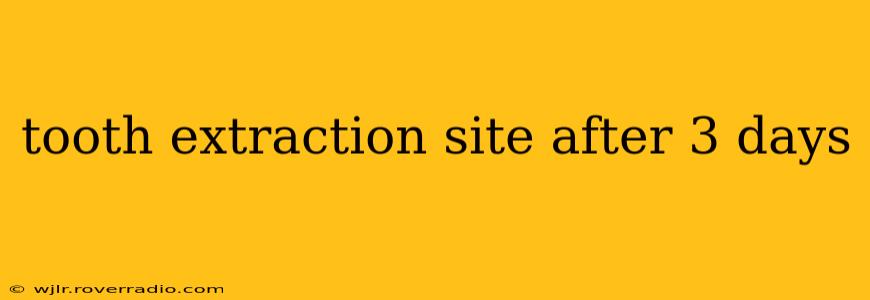Having a tooth extracted can be a somewhat unsettling experience, and the recovery process can leave you with many questions. Three days post-extraction is a crucial point in healing, where you're likely past the initial pain but might still experience some discomfort and changes in the extraction site. This comprehensive guide addresses common concerns and helps you understand what's normal and when to seek professional help.
What Should My Tooth Extraction Site Look Like After 3 Days?
Three days after a tooth extraction, the initial bleeding should have subsided, and the swelling should be starting to decrease. You might still notice some puffiness, especially in the cheek area near the extraction site. The area itself will likely be covered by a blood clot, which is essential for proper healing. This clot might appear dark red or even brownish. A small amount of oozing or pinkish discharge is also normal. However, excessive bleeding, intense swelling, or a foul odor coming from the site are signs that something might be wrong and warrant immediate attention from your dentist.
Is it Normal to Still Have Pain After 3 Days?
Some degree of pain or discomfort is expected three days post-extraction. While the initial, intense pain should have lessened, you might still experience a dull ache or throbbing sensation. This pain can usually be managed with over-the-counter pain relievers like ibuprofen or acetaminophen, following your dentist's recommendations. However, if the pain is severe, increasing in intensity, or unresponsive to medication, contact your dentist immediately.
What About Dry Socket After 3 Days?
Dry socket (alveolar osteitis) is a complication that occurs when the blood clot at the extraction site becomes dislodged or dissolves prematurely. This exposes the underlying bone and nerve endings, causing significant pain. While dry socket is more common in the first few days, it can occur later. Symptoms include a sharp, throbbing pain that often radiates to the ear or jaw, a bad taste in the mouth, and a visible empty socket. If you suspect you have a dry socket, contact your dentist immediately; they can provide treatment to relieve pain and promote healing.
How Much Swelling is Too Much After 3 Days?
Some swelling is normal after a tooth extraction. However, significant swelling that's increasing or spreading beyond the immediate extraction site could indicate an infection or other complication. Similarly, if the swelling is accompanied by fever, chills, or redness extending beyond the extraction site, these are warning signs requiring immediate professional attention.
Is it Okay to Rinse My Mouth After 3 Days?
Gentle rinsing is usually recommended starting a couple of days after extraction, but always follow your dentist's specific instructions. Avoid forceful rinsing, as this could dislodge the blood clot. Use a saltwater rinse (a half teaspoon of salt in a cup of warm water) to help keep the area clean and promote healing.
When Should I Call My Dentist After a Tooth Extraction?
Contact your dentist immediately if you experience any of the following:
- Excessive bleeding: Bleeding that soaks through gauze after several hours or continues steadily.
- Severe or worsening pain: Pain that is not controlled by over-the-counter medication.
- Increased swelling: Significant swelling that increases or spreads beyond the extraction site.
- Signs of infection: Fever, chills, pus, or redness extending beyond the extraction site.
- A foul odor or taste: This could suggest an infection or dry socket.
- Difficulty swallowing or breathing: These are serious signs and require urgent medical attention.
Remember, this information is for general guidance only. Always follow your dentist’s specific post-operative instructions. They're the best source of information regarding your individual case and can provide tailored advice based on your specific situation and healing progress. Early intervention can prevent serious complications and ensure a smoother recovery.
